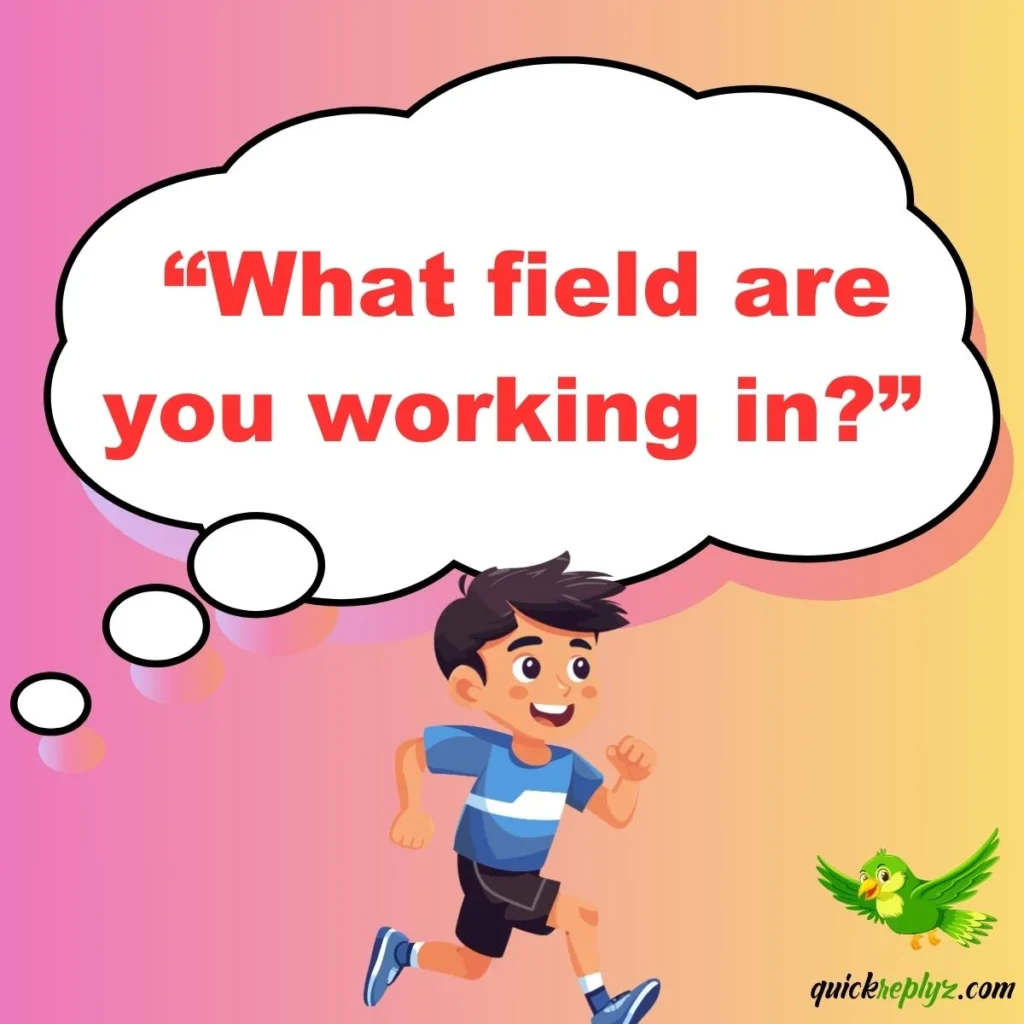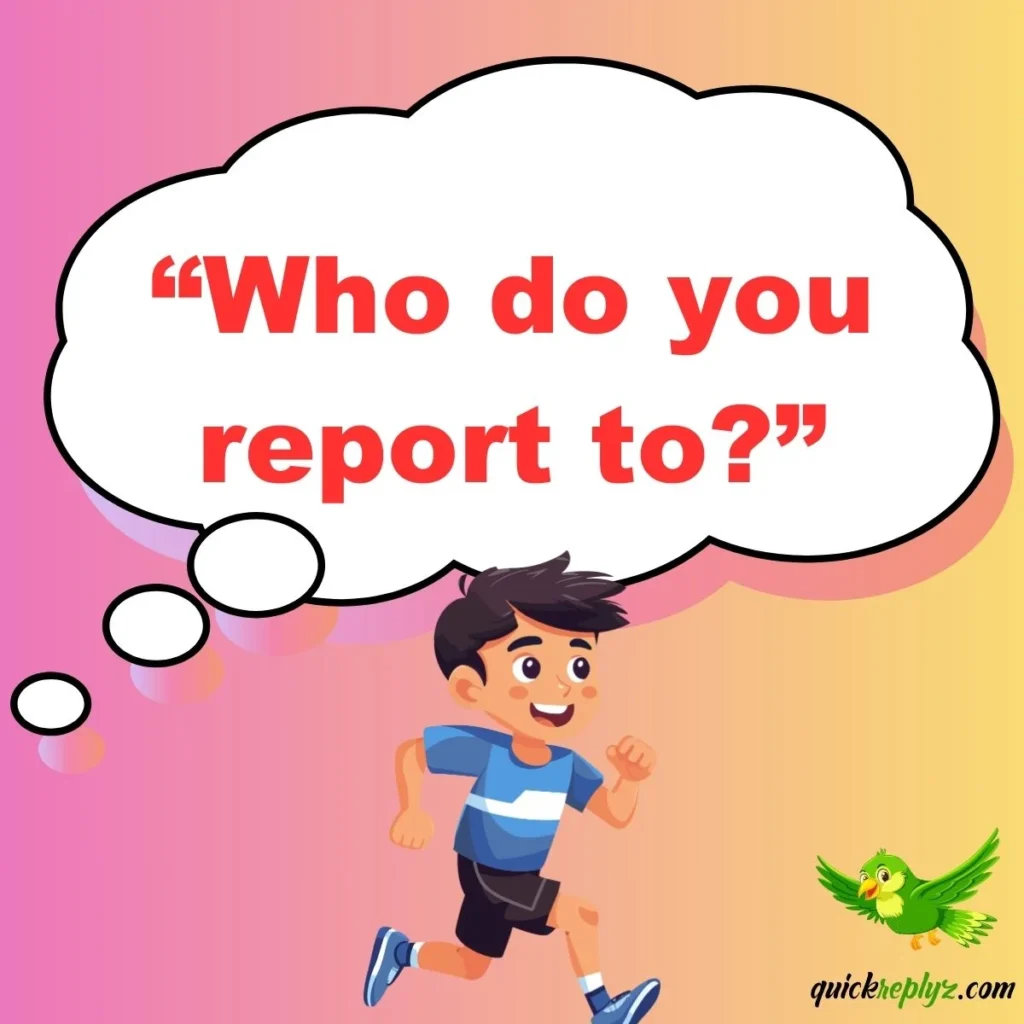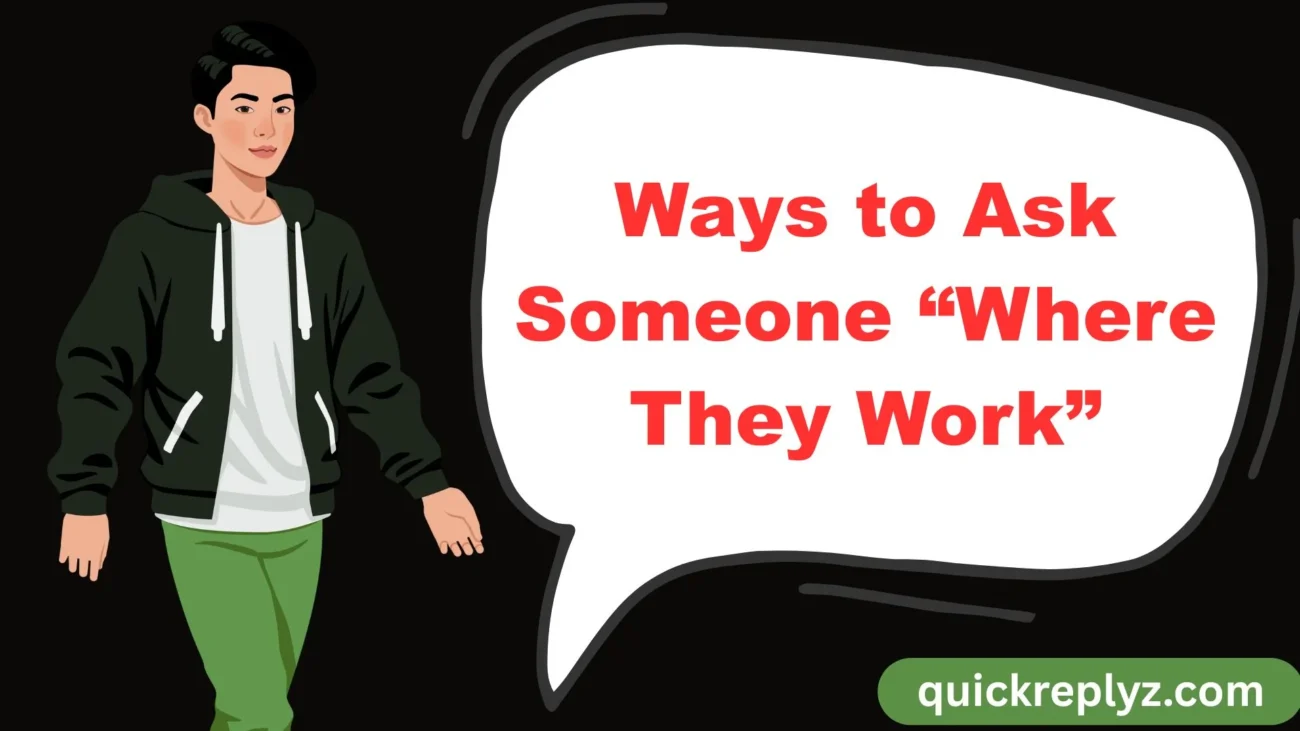In daily conversations, asking someone where they work can be simple or nuanced depending on context. Knowing how to ask this question politely and naturally helps build connections without making the other person uncomfortable. Whether you’re networking, making new friends, or simply curious, there are creative and engaging ways to ask “Where do you work?”. This article shares 30 effective ways to ask someone where they work, complete with examples, best use cases, and practical tips to ensure your conversation flows naturally. Each method is user-friendly, professional, and suitable for different settings, helping you leave a positive impression.
Another or Professional Way to Say “Where They Work”
- What’s your profession?
- Where do you work?
- Which company do you work for?
- What’s your current role?
- Where are you employed?
- What line of work are you in?
- Where’s your workplace?
- Which organization are you with?
- What do you do for work?
- What company are you associated with?
- Where do you do your work?
- Which industry are you in?
- Who do you work for?
- What’s your job?
- Where are you working these days?
- What company do you belong to?
- In which organization do you work?
- Where’s your office?
- Who’s your employer?
- What field are you working in?
- Which team are you a part of?
- What kind of work do you do?
- What’s your job title?
- Where are you currently employed?
- Who do you report to?
- Which office are you based in?
- What’s your professional background?
- Which department do you work in?
- What’s your career path?
- Where do you see yourself working?
1. “What’s your profession?”
Asking someone about their profession is a polite and formal way to know their workplace. It works well in professional networking events or formal gatherings where titles and roles matter. People usually respond with their job title first, which naturally opens the conversation for more details about their company or industry.
Example: “Hi, I’m curious—what’s your profession?” Best Use: Networking events, conferences, or LinkedIn conversations.
2. “Where do you work?”
The classic approach is simple and direct, ideal for casual conversations with new acquaintances. While it’s straightforward, it’s essential to ask with a friendly tone to make it sound natural rather than intrusive.
Example: “By the way, where do you work?” Best Use: Coffee meetups, casual introductions, or small talk.
3. “Which company do you work for?”
This approach is slightly more specific, focusing on the organization rather than just the role. It works well in professional environments or networking sessions. People often appreciate this because it shows interest in their workplace culture.
Example: “I’d love to know—which company do you work for?” Best Use: Career fairs, business networking events, or professional meetups.
4. “What’s your current role?”
Focusing on the role rather than the company is polite and conversational. It allows the other person to share more about their job responsibilities, which can lead to a richer discussion.
Example: “Can I ask what your current role is?” Best Use: Team introductions, virtual meetings, or career-oriented chats.
5. “Where are you employed?”

A formal and polite variation suitable for professional contexts. It’s slightly old-fashioned but conveys genuine interest without sounding intrusive.
Example: “May I ask where you are employed?” Best Use: Formal events, conferences, or professional networking.
6. “What line of work are you in?”
This question focuses on the industry or sector rather than a specific company. It’s excellent for understanding career backgrounds and starting broader conversations.
Example: “I’m curious—what line of work are you in?” Best Use: Social gatherings, networking, or online professional chats.
7. “Where’s your workplace?”
A casual, friendly approach ideal for informal meetings. This is less formal than “Where are you employed?” but still gets the information politely.
Example: “So, where’s your workplace?” Best Use: Coffee shops, casual networking, or friendly meetups.
8. “Which organization are you with?”
This is suitable for formal networking, conferences, and professional circles. It highlights interest in the organization and can help in establishing connections.
Example: “I’d love to know—which organization are you with?” Best Use: Professional events, LinkedIn messages, or team collaborations.
9. “What do you do for work?”
A friendly, approachable, and informal way to ask. It works well in social settings where the tone is casual but genuine curiosity is appreciated.
Example: “Hey, what do you do for work?” Best Use: Parties, casual meetups, or online conversations.
10. “What company are you associated with?”

This phrasing is slightly formal and professional, suitable for business events. It indicates interest in their professional affiliation rather than just their job.
Example: “May I ask what company you’re associated with?” Best Use: Conferences, seminars, and professional networking events.
11. “Where do you do your work?”
A conversational and slightly creative alternative. It emphasizes the location or nature of their work while keeping the tone friendly.
Example: “Just curious—where do you do your work?” Best Use: Informal chats, casual introductions, or social settings.
12. “Which industry are you in?”
This shifts focus from the company to the industry or field, which can spark more engaging conversations about trends, challenges, or experiences.
Example: “I’m exploring different industries—may I ask which one you’re in?” Best Use: Networking events, career discussions, or business introductions.
Also Read This:30 Best Replies to “How’s Your Studies Going?”
13. “Who do you work for?”
A slightly casual approach, best used in informal settings. It’s direct but conversational, often leading to stories about their company or role.
Example: “Hey, who do you work for these days?” Best Use: Social gatherings, casual meetups, or small talk.
14. “What’s your job?”
Short, simple, and casual. Perfect for everyday conversations with friends or acquaintances. It’s informal, so tone is key to avoid sounding abrupt.
Example: “So, what’s your job?” Best Use: Casual conversations, friendly introductions, or online chats.
15. “Where are you working these days?”
This phrase shows interest in current activity, suitable for both professional and casual settings. It can also spark discussions about recent career changes.
Example: “Where are you working these days?” Best Use: Catching up with old friends, LinkedIn messages, or networking.
16. “What company do you belong to?”
A slightly formal and unique approach, emphasizing professional affiliation. It works best in professional circles.
Example: “Could you tell me what company you belong to?” Best Use: Corporate events, networking meetups, or professional introductions.
17. “In which organization do you work?”
Formal phrasing, excellent for email introductions, conferences, or professional letters. It shows polite interest in the organization rather than the individual.
Example: “May I ask in which organization you work?” Best Use: Formal correspondence, seminars, or corporate events.
18. “Where’s your office?”
This is more casual, often used when you already know the person’s role but want to know the workplace location.
Example: “By the way, where’s your office?” Best Use: Casual chats, co-working spaces, or meetups.
19. “Who’s your employer?”
Slightly formal and professional phrasing. Best used in business or networking contexts.
Example: “Could you tell me who your employer is?” Best Use: LinkedIn messages, conferences, or corporate introductions.
20. “What field are you working in?”

Focuses on the area of expertise or industry, not just the company. Excellent for sparking meaningful conversations.
Example: “I’m curious—what field are you working in?” Best Use: Networking, professional seminars, or career-oriented discussions.
21. “Which team are you a part of?”
Useful when you know the company but want to understand their role or department. Great for internal networking.
Example: “Which team are you a part of at your company?” Best Use: Workplace introductions, corporate events, or team-building sessions.
22. “What kind of work do you do?”
Friendly, conversational, and informal. Encourages storytelling about day-to-day responsibilities.
Example: “So, what kind of work do you do?” Best Use: Casual meetups, coffee conversations, or online chats.
23. “What’s your job title?”
Professional and direct. Perfect for networking events, LinkedIn connections, or professional correspondence.
Example: “May I know your job title?” Best Use: Conferences, professional meetups, or LinkedIn networking.
24. “Where are you currently employed?”
A polite, formal version suitable for professional introductions and serious networking situations.
Example: “Where are you currently employed?” Best Use: Seminars, conferences, or professional emails.
25. “Who do you report to?”

A professional, context-specific question suitable for workplace discussions or corporate networking.
Example: “If you don’t mind sharing, who do you report to?” Best Use: Office networking, mentorship, or career discussions.
26. “Which office are you based in?”
Focuses on location rather than the company. Useful for multinational companies or organizations with multiple branches.
Example: “Which office are you based in?” Best Use: Corporate networking, multi-location teams, or business trips.
27. “What’s your professional background?”
This is broader and invites storytelling about previous jobs, experiences, and expertise.
Example: “I’d love to know your professional background.” Best Use: Networking, mentorship, or career-oriented discussions.
28. “Which department do you work in?”
Ideal when the company is known and you want to understand their specific role or responsibilities.
Example: “Which department do you work in?” Best Use: Internal introductions, corporate events, or business discussions.
29. “What’s your career path?”
Encourages deeper conversations about journey, achievements, and experiences. Great for networking and mentorship.
Example: “I’m curious—what’s your career path been like?” Best Use: Networking events, mentorship sessions, or professional meetups.
30. “Where do you see yourself working?”
A forward-looking and engaging approach that opens career-oriented discussions. Shows genuine interest in the other person’s goals.
Example: “Where do you see yourself working in the next few years?” Best Use: Mentorship, career counseling, or networking conversations.
Conclusion
Knowing how to ask someone where they work can make your interactions more engaging, respectful, and meaningful. Whether it’s formal networking or casual social gatherings, the 30 strategies above provide creative, polite, and context-specific ways to approach this common question. Using the right phrasing and tone helps foster connections, spark conversations, and leave a positive impression.
FAQs
Q1: Is it rude to ask someone where they work?
A1: Not if asked politely and in context. Friendly or professional tone makes it respectful.
Q2: Which phrasing is best for networking events?
A2: Options like “What’s your profession?” or “Which company are you with?” are professional and engaging.
Q3: How can I ask without sounding intrusive?
A3: Use casual, friendly language and show genuine interest in their response.
Q4: Can these questions work online?
A4: Yes, especially in LinkedIn messages, email introductions, or social media networking.
Q5: Which approach is best for casual meetups?
A5: Phrases like “What do you do for work?” or “Where do you work these days?” feel natural and relaxed.

